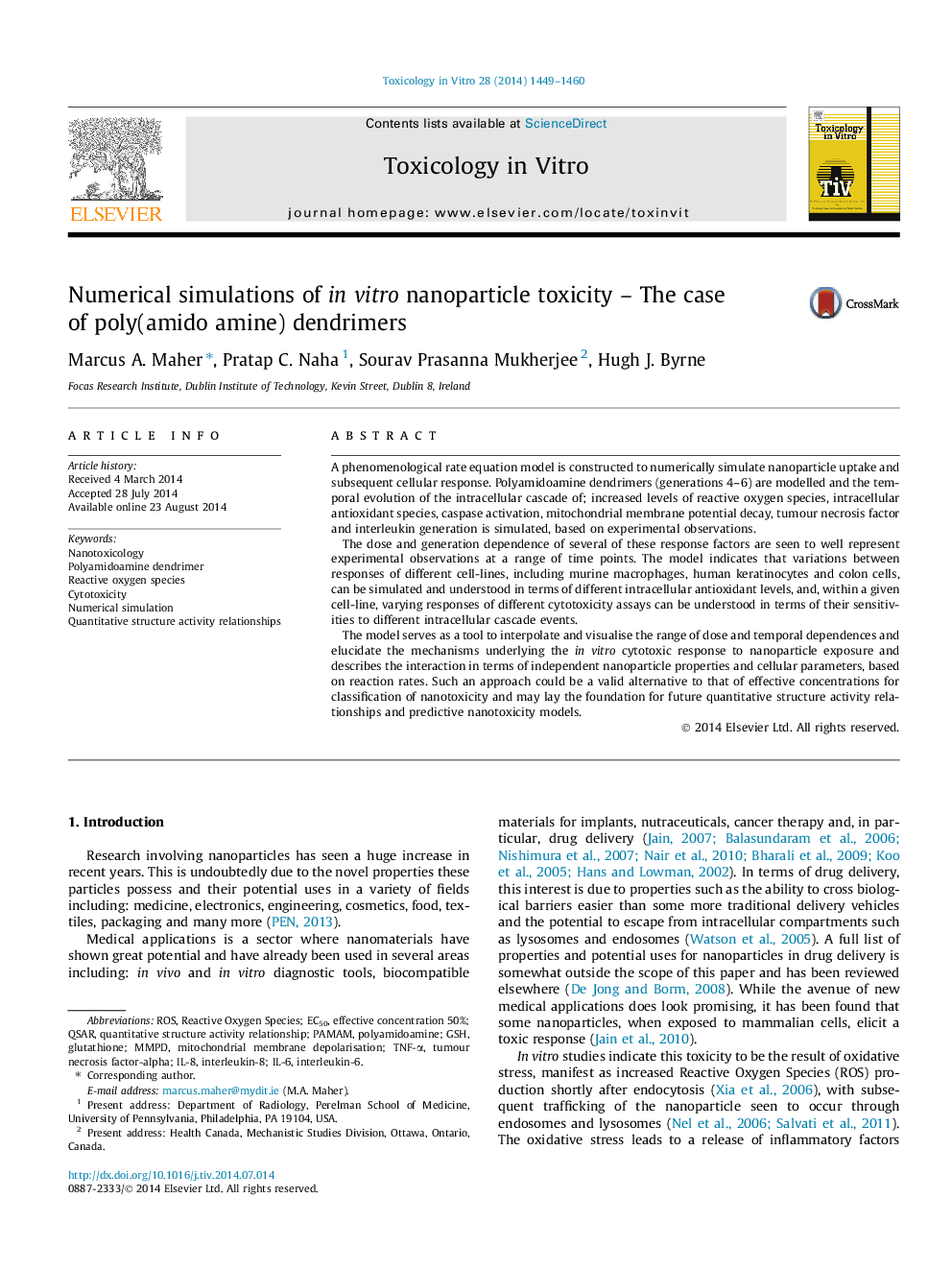| Article ID | Journal | Published Year | Pages | File Type |
|---|---|---|---|---|
| 5861839 | Toxicology in Vitro | 2014 | 12 Pages |
â¢The time evolution of oxidative stress and immune response in vitro.â¢The dose and generation dependence of oxidative stress.â¢The dose dependent viability for different dendrimer nanoparticles.â¢The differing responses of different cytotoxic assays and cell lines.
A phenomenological rate equation model is constructed to numerically simulate nanoparticle uptake and subsequent cellular response. Polyamidoamine dendrimers (generations 4-6) are modelled and the temporal evolution of the intracellular cascade of; increased levels of reactive oxygen species, intracellular antioxidant species, caspase activation, mitochondrial membrane potential decay, tumour necrosis factor and interleukin generation is simulated, based on experimental observations.The dose and generation dependence of several of these response factors are seen to well represent experimental observations at a range of time points. The model indicates that variations between responses of different cell-lines, including murine macrophages, human keratinocytes and colon cells, can be simulated and understood in terms of different intracellular antioxidant levels, and, within a given cell-line, varying responses of different cytotoxicity assays can be understood in terms of their sensitivities to different intracellular cascade events.The model serves as a tool to interpolate and visualise the range of dose and temporal dependences and elucidate the mechanisms underlying the in vitro cytotoxic response to nanoparticle exposure and describes the interaction in terms of independent nanoparticle properties and cellular parameters, based on reaction rates. Such an approach could be a valid alternative to that of effective concentrations for classification of nanotoxicity and may lay the foundation for future quantitative structure activity relationships and predictive nanotoxicity models.
